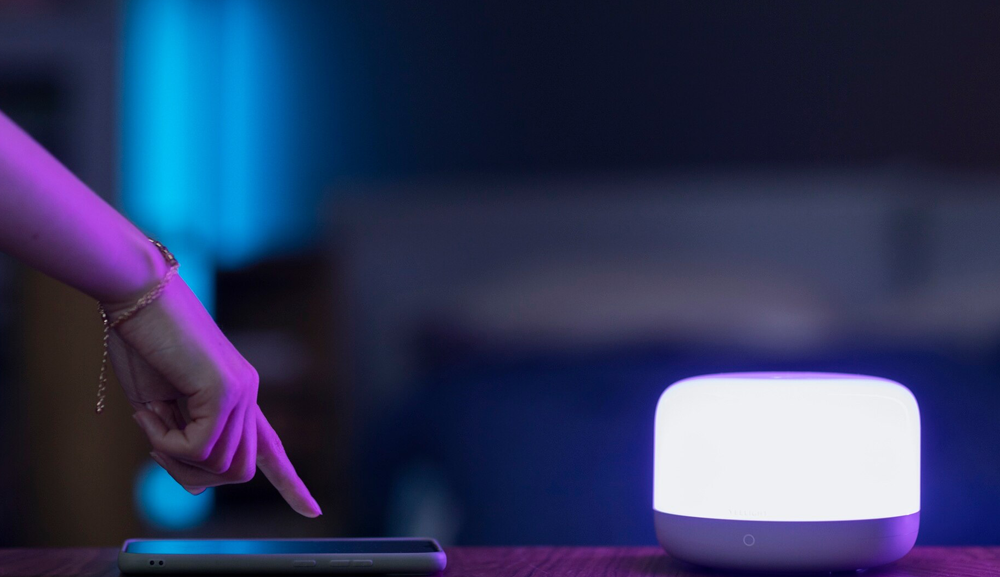Li-Fi vs. Wi-Fi: Which Wireless Technology is Faster & Safer?

🚀 Li-Fi vs. Wi-Fi: Which is Faster & Safer? Discover the future of high-speed internet alternatives with Li-Fi technology—a light-based internet revolution that outpaces Wi-Fi! 🌟
In the world of high-speed internet alternatives, two wireless communication technologies stand out: Li-Fi vs. Wi-Fi. While Wi-Fi has dominated the wireless networking industry for decades, Li-Fi technology, also known as light-based internet technology, is an emerging innovation that promises to revolutionize data transmission. But how does wireless light communication compare to traditional radio waves? Li-Fi vs. Wi-Fi: which is faster and more secure? Let's break it down.
What is Li-Fi and How Does it Work?
Li-Fi, or Light Fidelity, is a wireless light communication technology that uses visible light from LED bulbs to transmit data. Unlike Wi-Fi, which relies on radio waves, Li-Fi technology encodes information into light signals, which are then received by a photodetector.
How Li-Fi Works
- Transmission: An LED light modulates its intensity at rapid speeds (imperceptible to the human eye), embedding digital data.
- Reception: A photodetector captures these modulated signals and converts them into electronic data.
- Processing: The receiver processes the signal and transmits it to a connected device.
This innovative light-based internet technology boasts impressive speeds and security advantages, making it a strong contender for the future of wireless networking.
Li-Fi Speed vs. Wi-Fi Speed: Which is Faster?
One of the biggest advantages of Li-Fi vs. Wi-Fi is speed. Li-Fi has the potential to reach speeds up to 224 Gbps, significantly outperforming standard Wi-Fi, which currently peaks at 9.6 Gbps (Wi-Fi 6).
Speed Comparisons
- Li-Fi Speed: Theoretically, up to 224 Gbps.
- Wi-Fi Speed: Up to 9.6 Gbps with Wi-Fi 6.
- Real-World Application: Li-Fi has been tested at speeds around 100 Gbps, still far exceeding Wi-Fi.
Because Li-Fi technology relies on light waves, which have a much higher frequency than radio waves, it can support higher data transfer rates. This makes it an ideal candidate for environments requiring ultra-fast connectivity.
Li-Fi vs. Wi-Fi: Which is More Secure?
Security is a critical concern in the digital world. Li-Fi vs. Wi-Fi: which is faster and more secure? Here’s how they compare:
Wi-Fi Security Risks
- Susceptibility to hacking: Wi-Fi signals can penetrate walls, making them accessible to unauthorized users.
- Interference issues: Wi-Fi networks often face congestion from multiple connected devices.
- Susceptibility to jamming: Radio frequency interference can compromise the network.
Li-Fi Security Advantages
- Limited range: Since wireless light communication cannot penetrate walls, Li-Fi is confined to a specific area, making it less vulnerable to hacking.
- No interference: Unlike Wi-Fi, Li-Fi does not experience congestion from overlapping signals.
- No eavesdropping: Hackers cannot intercept light-based internet technology signals unless they are physically present in the room.
For environments that prioritize data security, such as government agencies, military installations, and financial institutions, Li-Fi technology presents a more secure alternative to Wi-Fi.
Li-Fi Applications: Where Can It Be Used?
The unique properties of Li-Fi technology make it suitable for various applications. Some key Li-Fi applications include:
- Healthcare: Wi-Fi signals can interfere with medical equipment, but Li-Fi offers a safe and interference-free alternative for hospitals.
- Aviation: Airplanes can use wireless light communication for in-flight entertainment and data exchange without causing interference.
- Underwater Communication: Radio waves do not travel well in water, but Li-Fi can facilitate high-speed underwater data transmission.
- Smart Cities: Li-Fi-enabled streetlights could provide seamless internet access while reducing infrastructure costs.
- Industrial Automation: Factories can use light-based internet technology for real-time communication without electromagnetic interference.
The adoption of Li-Fi applications could transform multiple industries, making connectivity faster, safer, and more efficient.
Li-Fi Limitations: Challenges to Overcome
While Li-Fi technology has immense potential, it also has limitations:
- Limited Range: Since light cannot penetrate walls, Li-Fi’s coverage is restricted to a single room.
- Requires Direct Line of Sight: Objects or obstructions between the transmitter and receiver can disrupt the connection.
- Dependence on Light Source: Li-Fi only works in well-lit areas, making it less effective in complete darkness.
- Infrastructure Costs: Implementing light-based internet technology requires new infrastructure, which could be expensive.
Despite these challenges, advancements in the future of wireless networking could improve Li-Fi technology, making it a viable alternative to Wi-Fi.
Future of Wireless Networking: Will Li-Fi Replace Wi-Fi?
The future of wireless networking will likely be a combination of Li-Fi and Wi-Fi, rather than one replacing the other. Each technology has its strengths:
- Wi-Fi will continue to be the primary solution for broad-range connectivity and mobility.
- Li-Fi will complement Wi-Fi in high-security, high-speed environments.
In the coming years, we can expect integrated Li-Fi and Wi-Fi networks, creating a hybrid ecosystem that optimizes connectivity across different settings.
Final Verdict: Li-Fi vs. Wi-Fi – Which One Wins?
- Speed: Li-Fi is faster, reaching speeds up to 224 Gbps.
- Security: Li-Fi is more secure, as light signals cannot be intercepted through walls.
- Practicality: Wi-Fi remains more versatile, covering larger areas without requiring line-of-sight.
Both technologies serve different purposes, and together, they will shape the future of wireless networking.
Conclusion
The battle of Li-Fi vs. Wi-Fi is not about one technology replacing the other, but about enhancing connectivity. Li-Fi technology offers high-speed, secure, and interference-free communication, making it ideal for specialized applications. Meanwhile, Wi-Fi remains the dominant choice for general internet access.
As the future of wireless networking unfolds, the integration of wireless light communication with existing high-speed internet alternatives will redefine the way we stay connected. Whether in hospitals, airplanes, or smart cities, Li-Fi applications are poised to revolutionize digital communication.
So, in the debate of Li-Fi vs. Wi-Fi: which is faster and more secure?—Li-Fi wins on speed and security, but Wi-Fi remains more practical for everyday use. The best solution is a combination of both, ensuring a future where connectivity is faster, safer, and more efficient than ever before.
More Articles
 10 Dec 2025
10 Dec 2025
Latest Freelancing Trends in Technology for Remote Work
Stay ahead in remote work with insights on Freelancing trends in technology, top skills and global technology freelance opportunities.
 10 Dec 2025
10 Dec 2025
Cloud Disaster Recovery Planning for Business Continuity
Cloud Disaster Recovery Planning helps businesses stay resilient with clear strategies that reduce downtime and protect critical operations.
 09 Dec 2025
09 Dec 2025
Tech Startup Funding Trends and Strategies 2026
Stay ahead of 2026 tech startup funding trends with insights on winning strategies, investor expectations, and capital-raising tactics for early-stage founders.
 09 Dec 2025
09 Dec 2025
Link Building Strategies for Higher Rankings – Updated
Boost your SEO with actionable link building strategies that strengthen rankings and support long-term growth.